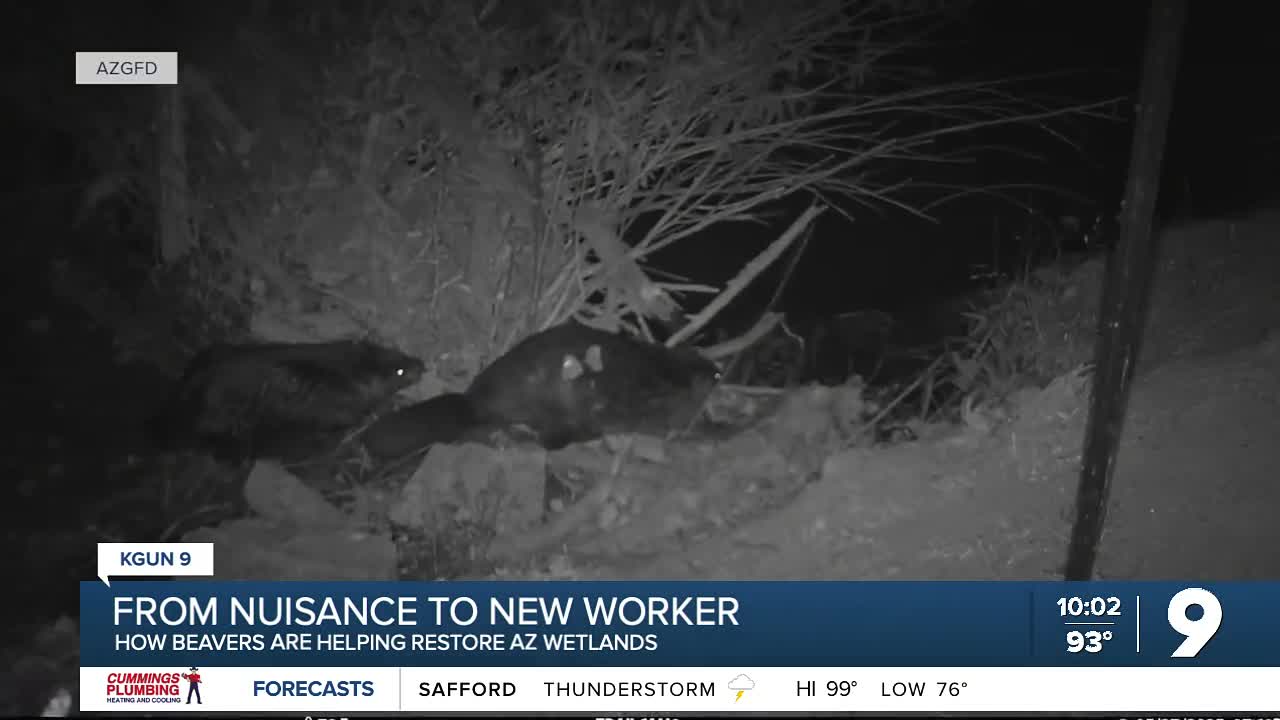TUCSON, Ariz. — The Arizona Game and Fish Department is trying out a new technique to restore Arizona wetlands.
Though Arizona is largely a desert state, 1% of the state is made up of wetlands, according to the U.S. Fish and Wildlife Service. The number has been slowly falling since the 1800s, resulting in a loss of one-third of the original wetlands.
In the past few months, AZGFD has seen a resurgence in the wetlands along a stretch of the San Pedro River.
“We’ve seen native cottonwood, willow trees and saplings just rebound," said Angie Stingelin, Senior Wildlife Specialist with the department. "We’ve had species come back in that we haven’t seen in years in certain stretches of the river.”
Stingelin and her colleagues give some of the credit to a few of their newer team members: two relocated "nuisance beavers."
The male and female beaver— who are not given names to keep a separation between man and nature— were taken from upstate Arizona, where wildlife specialist Ryan Pernu says they were "blocking irrigation ditches and they were blocking drainages and flooding areas that didn’t need to be flooded.”
The department was hoping to harness the beaver's natural dam-building instincts to slow down the flow of the San Pedro, allowing the river to expand and hold water longer during drier months.
A few months later, they've started seeing results.
“This beaver built up this dam just in the past couple of weeks and has really ponded the water back… maybe like a few hundred meters back. The water was only a couple feet wide. Now it’s like 5 to 6 feet wide.”
Stingelin added that the river's surface flow has increased by one to two miles.
They say that extra water has helped sprout more plants— both seasonal and year-round—and brought more animals to the banks of the river.
“Since we have surface water, we see animals come down from the uplands and they’ll come down here to drink water," Pernu said "It’ll get dry in mountains and the foothills, and they’re looking for any water source, and this is one of the biggest ones down here.”
Though AZGFD is tracking the female beaver with a GPS, the mammals can stay on the San Pedro River for as long as they'd like. Stingelin says, "they move around and shift as the river shifts and forage values shift.”
With monsoon on the horizon, she says only time will tell how long they'll stick around.
If you encounter a "nuisance beaver" near your property, contact AZGFD for the next steps.




